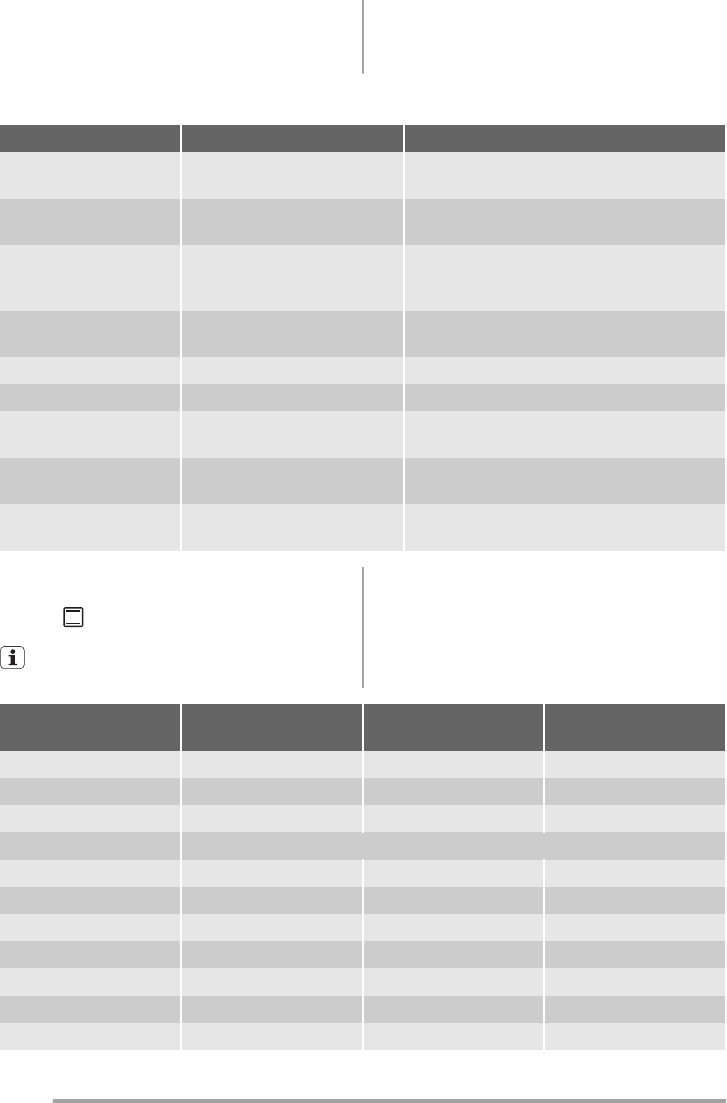
• Cakes and pastries at different heights do
not always brown equally at first. If this oc-
curs, do not change the temperature setting.
The differences equalize during the baking
procedure.
Tips on baking
Baking results Possible cause Remedy
The cake is not browned
sufficiently below
Incorrect oven level Put the cake on a lower oven level
The cake sinks (becomes
soggy, lumpy, streaky)
Oven temperature too high Use a lower setting
The cake sinks (becomes
soggy, lumpy, streaky)
Baking time is too short Set a longer baking time
Do not set higher temperatures to de-
crease baking times
The cake sinks (becomes
soggy, lumpy, streaky)
Too much liquid in the mixture Use less liquid. Look at the mixing times, spe-
cially when you use mixing machines
Cake is too dry Oven temperature too low Set a higher oven temperature
Cake is too dry Baking time too long Set a shorter baking time
Cake does not brown
equally
Oven temperature too high and
baking time too short
Set a lower oven temperature and a longer
baking time
Cake does not brown
equally
No equal mixture Put the mixture equally on the baking tray
Cake does not cook in
the baking time set
Temperature too low Use a slightly higher oven temperature setting
Top oven
Baking
Shelf Positions are not critical but ensure
that oven shelves are evenly spaced when
more than one is used (e.g. shelf positions 1
and 3)
Food
Temperature
[°C]
Approx Cook Time
(mins)
Shelf Position
Biscuits 170 - 190 10 - 20 1
Bread 200 - 220 30 - 35 1
Bread rolls/buns 200 - 220 10 - 15 1
Cakes:
- Small & Queen 170 - 180 18 - 25 1
- Sponges 160 - 175 20 - 30 1
- Victoria Sandwich 160 - 170 18 - 25 1
- Madeira 140 - 150 75 - 90 1
- Rich Fruit 140 - 150 120 - 150 1
- Gingerbread 140 - 150 75 - 90 1
- Meringues 90 - 100 150 - 180 1
10
www.zanussi.com


















